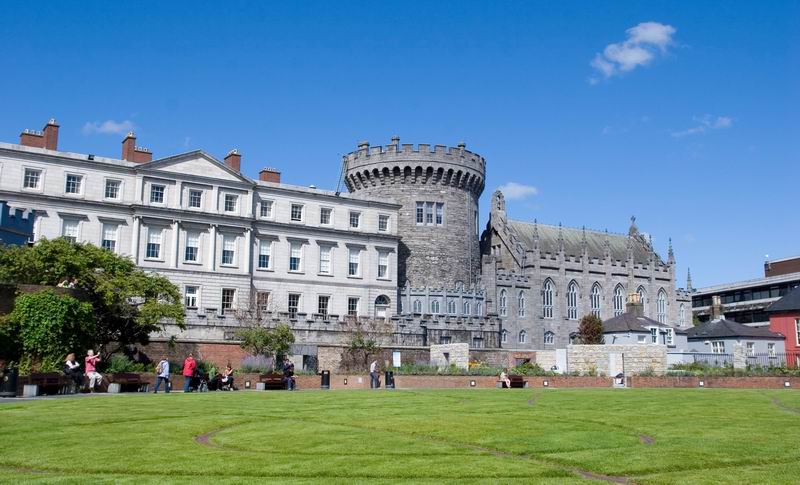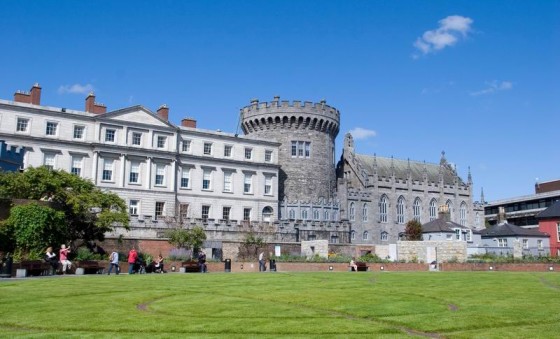
Dublin Castle lies at the heart of Dublin city. The city derives its name from the Black Pool known as ‘Dubh Linn’. Dublin castle is a premier historic building that adorns the capital city. It is one of the most famous castles in Dublin.
The history of Dublin Castle involves the Vikings as well as the British. It is situated to the south of River Liffey. The castle was constructed on the Viking fortress site. It became the home of British royalty in Ireland.
The palace is located at the meeting point of the rivers Poddle and Liffey. This creates a black pool. This pool is known as ‘Dub linn’ in Irish. To reach the castle, move westward of City Hall. This allows you to make an entry through the Cork Hill gate. The castle is situated on Castle Street, which is in west Dublin.

Tourists can make good use of the guided tours to the castle. Many officials in the Ireland Government use the site as a hub for state functions and government events. The primary State Apartments offer guided tours. These apartments are situated on the southern side of Upper Castle Yard. These luxurious and opulent apartments served as a home to English viceroys. Presently, the apartments are utilized as a venue to host visiting foreign dignitaries and heads of state. The apartments are replete with fancy carpets, opulent ceilings, and wonderful glass chandeliers.
The history of Dublin is constantly evolving. St Patrick’s Hall is a famous room in the castle. Presidents of Ireland are inaugurated here. The castle has a perfect blend of the new world and the old world. It serves as a link to the Viking culture and history of Great Britain.
Dublin castle is famous for its Record Tower. Dublin castle is the largest surviving relic of the Norman dynasty. The castle was constructed between 1208 and 1220 by King John. Dublin castle is replete with a courtyard and a clock tower. The Great Courtyard is renowned the world over as a site of the Black Pool.
The Round Drawing Room in the castle is an architectural wonder. It was first built in 1411, with extensive renovations in 1777. The Bermingham Tower served as a prison for Irish leaders. This tower has a close resemblance to Britain’s Tower of London.
The premises of the castle are also home to a church: Church of the Holy Trinity. This church was also known as Chapel Royal. The chapel is adorned with stained-glass windows, oak panels, and a mesmerizing display of fan vaults.